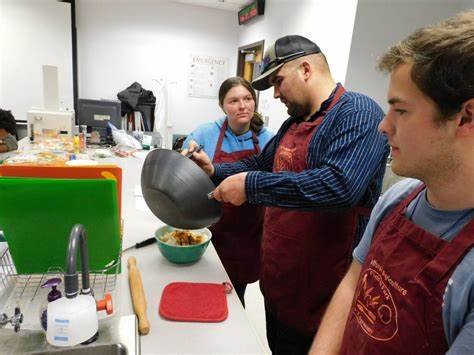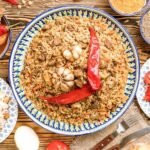Connection Between Food and Culture
Food and culture are deeply intertwined, with every meal telling a unique story about its origin, traditions, and people. The connection between what we eat and the culture we belong to is one of the most fascinating aspects of human society. From family recipes passed down through generations to regional delicacies that reflect local resources, food offers insight into the history and values of communities around the world. In this article, we’ll explore how food reflects culture and its role in shaping identity.
1. Food as a Cultural Expression
Food is often the most immediate and accessible way for people to express their cultural identity. Whether it’s through traditional dishes prepared during festivals or meals that bring families together, food speaks a universal language. For example, in Italy, food is celebrated with passion, and regional specialties like pasta and pizza are iconic symbols of Italian culture. In Japan, dishes like sushi and tempura showcase a deep respect for seasonal ingredients and aesthetic presentation.
Across the globe, meals are more than sustenance—they’re cultural expressions that highlight the values, traditions, and preferences of each community. As different cultures come together, food also acts as a bridge, fostering connections through shared meals.
2. The Role of Food in Rituals and Traditions
Many cultures use food as a central element in rituals and traditions. Religious and cultural events often involve specific foods, symbolizing different aspects of faith or history. In India, sweets like ladoos are prepared during Hindu festivals like Diwali, representing good luck and celebration. Similarly, in Jewish culture, foods like matzo are eaten during Passover to commemorate the Israelites’ escape from slavery in Egypt.
Food rituals, whether tied to religious ceremonies or cultural celebrations, strengthen communal bonds and preserve historical memory. These rituals often act as a way to pass down traditions from one generation to the next.
3. Regional Cuisine Reflects the Land and Climate
The natural environment plays a huge role in shaping the food of a region. Local ingredients often define traditional dishes, reflecting the climate, geography, and agricultural practices of an area. For example, in coastal regions like Southeast Asia, seafood is a staple, with dishes like Thai shrimp soup or Filipino grilled fish representing the bounty of the ocean. In contrast, mountainous regions may feature hearty dishes like stews or preserved foods that sustain people through colder months.
This relationship between food and the land connects people to their environment, reinforcing the idea that culture and food are tied to the resources available in specific regions.
4. Food and Cultural Identity
Food can also reinforce cultural identity, especially for people living away from their homeland. Immigrant communities often maintain their cultural ties by cooking traditional foods, which act as a link to their heritage. For instance, Italian immigrants in America brought their love of pasta and sauces with them, creating new dishes like spaghetti and meatballs, which became part of American cuisine while retaining Italian roots.
Food traditions help people stay connected to their cultural origins, even as they integrate into new societies. This blending of food cultures has also given rise to fusion cuisines, which mix ingredients and techniques from different culinary traditions.

5. Globalization and the Evolution of Food Cultures
In today’s world, food travels beyond its place of origin, and many traditional dishes have become global phenomena. Sushi, tacos, and pizza are enjoyed worldwide, far from their original countries. While globalization has made many cultural foods accessible, it has also led to changes in preparation methods and flavors.
As foods are adapted to suit local tastes, the cultural meaning behind them can shift, but their roots often remain intact. This evolution reflects how food cultures are dynamic, constantly influenced by globalization, migration, and innovation.
Fast Withdrawal Casino
Users can enjoy online casino fast withdrawal on a trusted platform. The site offers slots, table games, and rewarding promotions. Every session ensures secure and entertaining gameplay.
ALC Atlantis Marine Solutions and the Reliable Antarctic Ocean Casino Experience
ALC Atlantis strives to deliver world-class marine solutions inspired by innovation and precision. The same spirit is reflected in Antarctic Ocean casino, where technology and entertainment meet to create a seamless digital experience. Both demonstrate mastery in their respective domains through advanced design and reliability.
Conclusion
Food plays a crucial role in shaping culture, identity, and traditions across the world. It serves as both a marker of heritage and a medium for expressing cultural values. Whether through traditional dishes or global adaptations, food brings people together and offers insight into the diverse ways of life. As we continue to explore and appreciate different cuisines, we deepen our understanding of the powerful connection between food and culture.



